The easiest way to introduce WhiteFeather Hunter is to write that she is a multiple-award winning artist. Adding that she is a bioartist and a scholar wouldn’t still quite cover her practice. It’s more complicated than that but it is also relentlessly exciting.
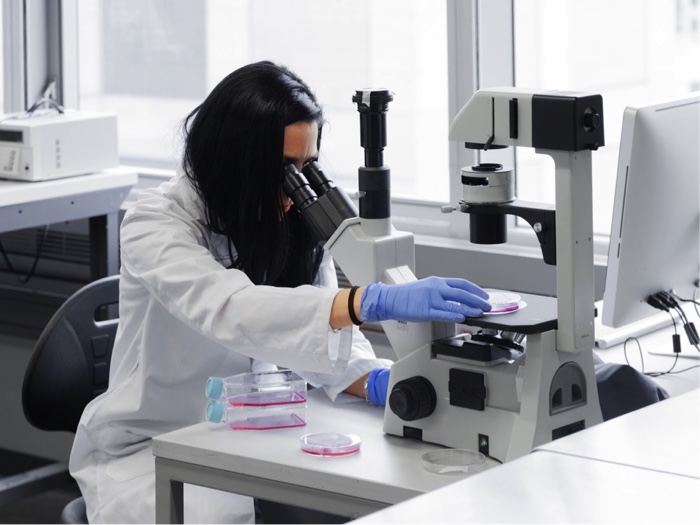
WhiteFeather Hunter. Photo: Matthew Brooks/ Milieux Institute
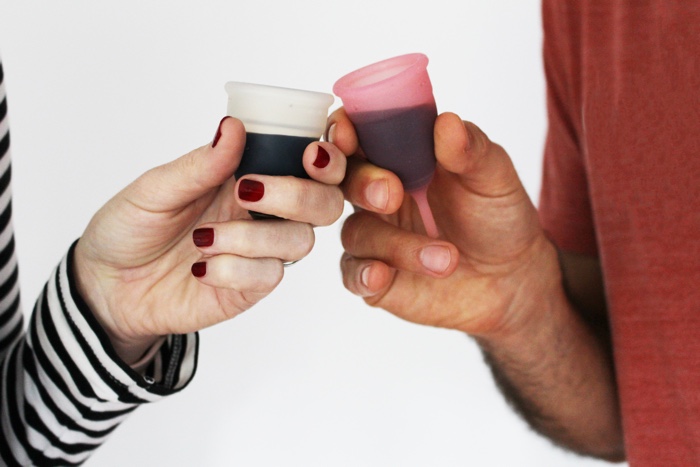
WhiteFeather Hunter, Mooncalf, 2019-present
In 2018, the artist collaborated with a microbiologist to create a “skin renewal” cream containing bacterial enzymes from her own saliva and from soil samples to explore the concept of bacto-intimacy and cast a critical gaze at the hi-tech lingo the cosmetic industry uses to sell its anti-ageing formulas. That same year, she also explored the possibility of using native plant species and an extremophilic bacteria to help heal highly contaminated gold mine tailing sites in Nova Scotia, Canada. A year earlier, she worked with a designer to create a delicate, organic-mechanic Gucci knock-off dress. Throughout her career, she has produced rogue taxidermy, sculptural pieces out of animal intestine from the local butcher and artificial bones, hacked electronics, investigated “lichenological time”, used landscapes and bodies as laboratories and experimented with the unpredictability of living material.
Right now, WhiteFeather Hunter is working on a PhD research project at SymbioticA (a research laboratory enabling artists and researchers to engage in wet biology practices in a biological science department at the University of Western Australia) that explores the intersection of feminist witchcraft and tissue engineering through the development of a body- and performance-based laboratory practice. One part of her research consists in collecting her own menstrual fluid and using this potent source of stem cells and growth factors to extract a serum that will be used as a new nutrient media for tissue culture. The serum could thus constitute a more ethical alternative to the fetal calf serum used in cellular agriculture. The fact that she is the first to study the viability of menstrual serum as a substitute for fetal calf serum to grow mammalian tissue in vitro tells you a lot about the masculine predominance in STEM fields.
Such a portfolio called for an interview!
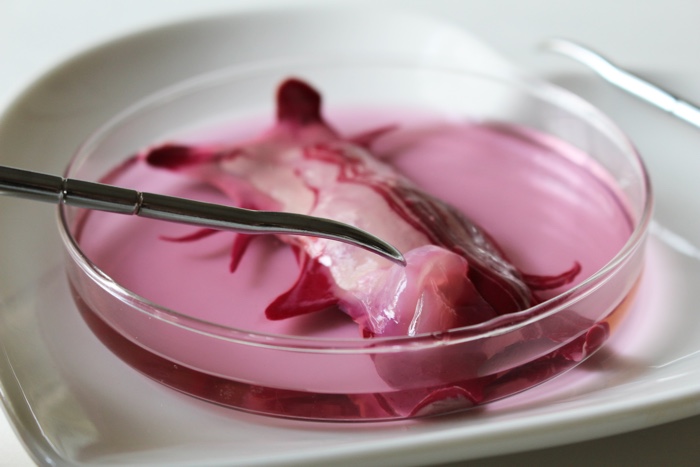
WhiteFeather Hunter, Mooncalf, 2019-present
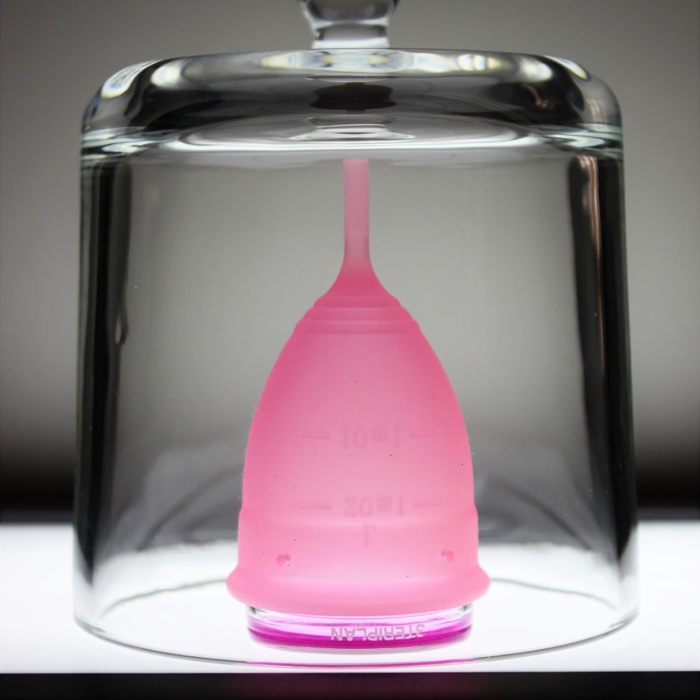
WhiteFeather Hunter, Mooncalf, 2019-present
Hi WhiteFeather! I’d like to start with the place of witchcraft in your practice. You have a deep understanding of biology. You are a PhD candidate in Biological Art at the University of Western Australia and have also worked in many international laboratory as an artist in residency and you have served as the Principal Investigator and Technician of the Speculative Life BioLab at the Milieux Institute for Arts, Culture and Technology at Concordia University. You often wear a lab coat in photo portraits. Since your practice has evolved in such close connection with science, I’m wondering what you encounter in witchcraft that you do not find in the rational, scientific world? How does witchcraft and science complement each other? Do they provide different types of answers to the same problem, for example? How do you reconcile them? If these are the correct terms to use.
Reconciling the worlds of science and witch(craft) requires digging up the history of gender, class and racial suppression, which are often intersected within the brutal trajectory of colonial and techno-capitalist advance, including biomedical. The foremost scholar on this history, analysed through a feminist lens, is of course Silvia Federici. Her two books, Caliban and the Witch (2004) and Witches, Witch-Hunting and Women (2018) are must-reads. I must also acknowledge Donna Haraway as a primary influence on many technofeminist witches such as myself, in terms of new philosophies for manifesting a future-now that is more equitable for women, trans and nonbinary people, BIPOC, more-than-human species or anyone/ anything else deemed as ‘other’ than the hetero cis-male baseline standard. We are working at queering, at the crossroads — specifically at the intersection of not just science and witchcraft, but also biotechnology and art, towards accessible (empowering) modes of social reconstruction, or ‘social reproduction’ on our own terms.
When I use the term witchcraft, I often emphasize the ‘craft’ aspect of the word, to indicate a legacy of folk, DIY, traditional or lay approaches (empirical, lived or situated knowledge bases) that inform individual and community care practices. This is in contrast, or sometimes now complementary to, institutionalized, authorized ‘care’ protocols such as conventional medical methods. The trick of my research is to attempt to seamlessly meld an embodied experience of ‘spirituality’ and all that it entails (ie. understanding the agency of nonhuman or more-than-human organisms and ‘inanimate’ matter — à la Jane Bennett) with measurable results to produce a body of work that both critiques and holds accountable the (economic, ecological, cultural and health) impacts of new technologies on the world, while also manipulating these tools towards more emancipatory ends. This is not to discount the many benefits of science — not at all. My perspective is that the ‘witch’ always was a scientist, and that science should be ultimately empirical/ lived. The problem is that often empirical knowledge is sometimes discredited (if not profitable) or exploited (if profitable) by industry, taking it out of the hands of the researcher or community.

Witchcraft spells for tissue culture
In the Missing Witches podcast, you talk about the history of witchcraft as anti-capitalist resistance. Apart from the podcast, what would you recommend we look to get more information about this type of resistance?
And does this dimension of witchcraft as anti-capitalist resistance (or resistance in general) have any resonance in today’s world? Could activists find any inspiration in witchcraft? Even male activists or is witchcraft for women alone?
Witchcraft is definitely not for women alone. The witch is a shape-shifter and defies sex/gender pigeonholing. Deviance from hegemonic norms is the celebrated forte of the witch.
Currently, we see numerous capitalist attempts at appropriating pop culture notions of witchcraft, along with other previously suppressed spiritual practices (such as indigenous traditions) for profitable outcomes, such as the sale of props like crystals and smudge sticks by beauty brands, etc. The witch knows that so-called ‘healing’ crystals for sale on Amazon or the Sephora website, for example, can often involve problematic, exploitative earth extraction methods — this is counter to the witch’s desires. The witch ultimately needs no ‘magical’ props other than political, knowledgeable control over her own body and what she can create with it/ for it/ through it, for herself and/or her community. This isn’t to say that she lives in a hut in the woods with mud floors and a sooty cauldron, out of reach of any cell phone tower. That might be nice for some, but not necessary.
The witch may be a technophile — she is, however, squinting skeptically at capitalism in everything that she does, and twisting technologies towards beautifully weird outcomes.
I’m fascinated by The Witch in the Lab Coat and Mooncalf, your experiments with creating nutrient serum for mammalian tissue culture using menstrual blood. If I understood correctly, you would use your own blood to grow tissue in vitro. After the first moment of surprise, I had to admit that it would make sense to use a material that would otherwise go to waste as a nutrient. But how nutritious would that blood be to grow cells? It is clearly much more ethical than fetal bovine serum but is it as nutritious? Is menstrual blood any better than blood that has another origin?
There is a cultural perception of menstrual blood as somehow tainted, ‘unclean’ or dirty. We see this view regularly perpetuated, for example by extremely problematic artworks such as Anish Kapoor’s recent series of menstruating vagina paintings, wherein he describes his ‘fascination’ with vaginas as something that, “stems from blood as “ritual matter”, but also its association with “the abject, with death, with the impure”. He adds: “It’s so strange that both are a place of origin and a place of dirt, or other matter, menstrual [blood].”
Vaginal fluids, absent of infection by external agents are neither toxic nor hazardous (nor ‘dirty’), yet the commonality of the perception of menstrual fluid itself as ‘pollutant’ persists in a variety of cultural contexts, unsupported by science. Recent genomic profiling of microbiota within the vaginal canal has shown the prominence of commensal species that produce bactericidal and virucidal compounds, mainly lactic acid. Most importantly for my research, proteomic analyses of menstrual blood have shown that it contains hundreds of unique proteins not found in venous blood. Yet, it has never, to my knowledge, been experimented with as a nutrient serum for tissue culture. I have now already produced a supply of menstrual serum from my own vaginal fluids. I’ve denatured the serum, meaning essentially cooking it at 65˚C for 15 minutes to render any unknown viral vectors inert. The next experiments will be to culture a variety of cell types in the serum to see which ones thrive best.
Politically, this work is important not only for addressing misogynist cultural taboos — the actual production of menstrual blood is still a material outside the control of the patriarchal capitalist economy. Menstruators don’t sit on stainless steel factory funnel toilets, bleeding ad infinitum into the supply chain. Neither is menstrual blood a scarce resource whose value can be artificially inflated on the commodities market—though, conceivably, it could be were the taboos around it to be overcome and its utilitarian potential realized. I’m hoping to get ahead that game, and head it off at the pass. My work seeks to re-orient the long-standing socio-biological construction of the female body as problematic, to that of innate potential for self-actualization and, importantly, self-directed scientific experimentation.
What type of cells will you use? Will they come from other animals?
Currently, I’ve isolated what has been previously identified as endometrial regenerative cells, a multipotent stem cell type that is found to be very abundant and robust in menstrual blood. My own stem cells were extremely easy to isolate from a thin layer of endometrial tissue that was extracted from my menstrual blood during the serum separation process, meaning that I spun down the whole blood in a centrifuge, into its component parts: serum, tissue and red blood cells. I removed the serum top layer (for later use) and then extracted cells from the middle mucus and tissue layer. The bottom layer, the red blood cells, was discarded. The stem cells I extracted grew extremely well in vitro, and are now in cryopreservation as part of my own personal cell bank at the University of Western Australia. Scientifically, I still need to experiment further with them to prove that they are what I think they are, including differentiating them into different cell types to see exactly what their potentialities might be. Can they become cardiomyocytes? Can they become connective tissue cells? Can they become muscle cells? That remains to be seen. What I do know, though, is that they are not embryonic stem cells so they cannot become a complex organism; merely a singular tissue type after differentiation.
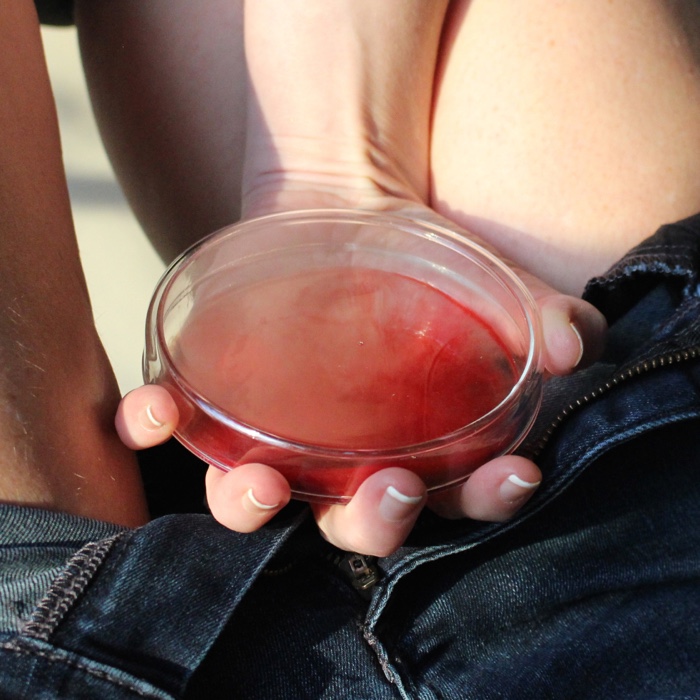
WhiteFeather Hunter, Mooncalf, 2019-present
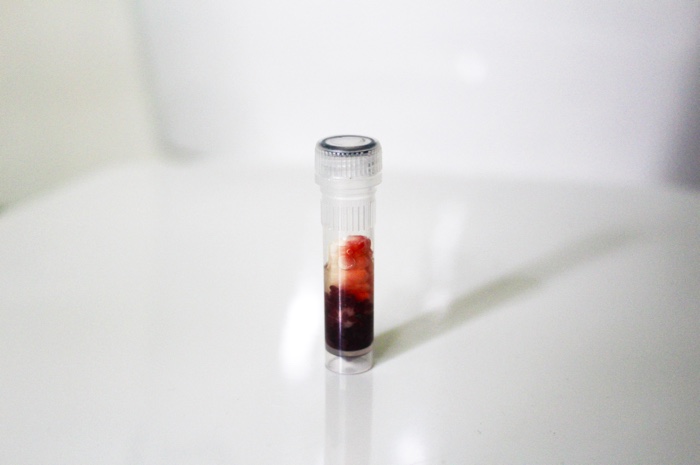
WhiteFeather Hunter, Mooncalf, 2019-present
Can you freely use your own menstrual blood in laboratory settings? Does its use have to be approved?
Funnily enough, within the context of my PhD, I had to first sign over my bodily autonomy to my supervisor, assigning her the official care and control of my body for the purposes of scientific experimentation. Ultimately, what that meant was that I had to compose all manner of bureaucratic documents, including a Participant Information Sheet wherein I informed myself of the potential hazards of working with my own menstrual blood or using a menstrual cup for specimen collection. This is an entirely weird process where my bodily knowledge essentially becomes disembodied and institutionalized/ regulated. The Human Research Ethics approval process took well over six months, and the unofficial word I received mid-way through the process was that someone on the ethics committee was ‘uncomfortable’ with my proposed research, meaning I had to defend its importance in an extremely bulletproof manner that elevated it scientifically beyond any reasonable or subjective arguments against it. I was also required to give excessively detailed job task breakdowns to explain very precisely every single thing I would do with the menstrual blood and where I would do it, meaning that any last vestige of privacy around the handling of my intimate body materials was forfeited. It was quite an interesting exercise. Now I am officially approved for the handling of my own menstrual blood.
Will this PhD research project at SymbioticA, University of Western Australia, be accompanied by performances? Are you planning to deploy and communicate it outside of the academia context? (if that’s not too soon to ask)
Performance is a big part of not only the dissemination of the research in terms of artistic outputs, but also for the gestation and in-corp-oration of new ideas. I use performance as a way to embody new knowledge as I am working through it and gaining it. It is a research method. The performances are recorded and then edited into didactic video performance works. I’m also an educator and making knowledge, particularly high-tech scientific knowledge, accessible is one of the core principles in my overall ethos. So, this is one of the ways that I use art towards a politics of knowledge accessibility. My performance videos are always interspersed with text subtitling that both provoke critical thought while also explaining protocols. I think that this way of working lends itself well to the new reality we find ourselves in with so many online interactions for conferences, exhibitions, etc.
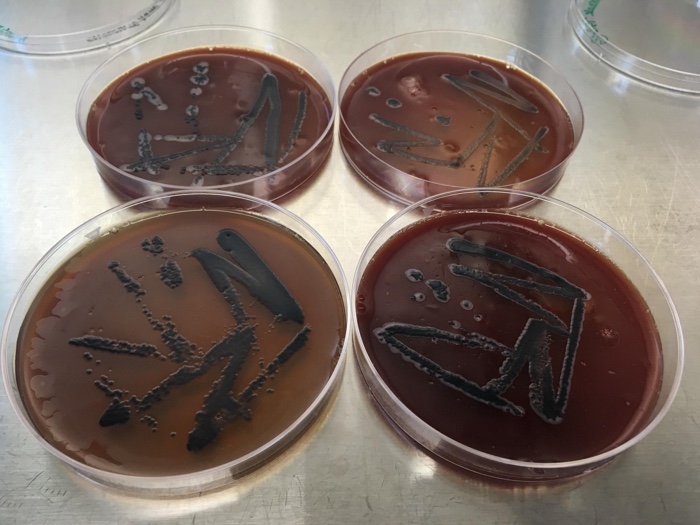
WhiteFeather Hunter, with Gen Moison, Vanessa Mardirossian, and Alex Bachmayer, Bactinctorium, 2017-2018. Petri dishes of Vogesella indigofera growing on menstrual blood agar
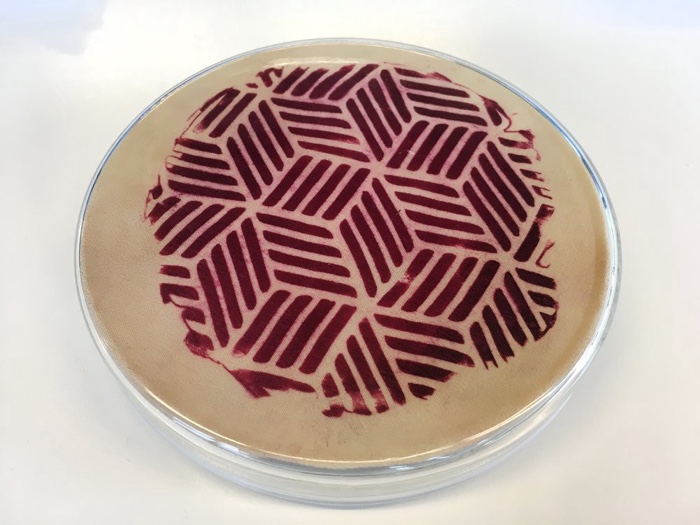
WhiteFeather Hunter, Serratia marsescens printed on silk
You also work with bacteria and other microorganisms and talk about co-creation. How much can you control or guide the aesthetic outcome of works developed in co-creation with microorganisms? Do they often surprise you?
I am always surprised, and that is part of the love of working with microorganisms. It’s a state of perpetual curiosity and also humility towards the more-than-human worlds. If I say that I am co-creating with microorganisms, I say it cautiously because I am always aware of the systems of control that are in play when generating the work. Ultimately, we are all co-creating our realities with innumerable microorganisms, electronic and other systems every day. I place a particular focus on the agency of the microbial world in the context of my own creative projects because it’s an acknowledgement of the fact that as much as I work within systems of control, I am never completely in control.

WhiteFeather Hunter, PROSPECTIVE FUTURES: THE AURELIA PROJECT, 2018. Photo: Mireille Bourgeois/ IOTA Institute
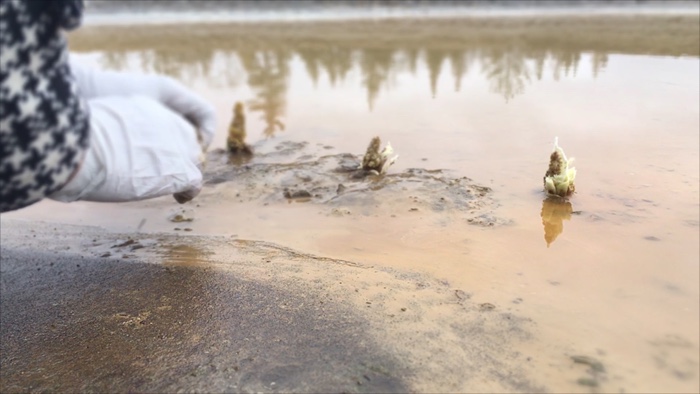
WhiteFeather Hunter, PROSPECTIVE FUTURES: THE AURELIA PROJECT, 2018
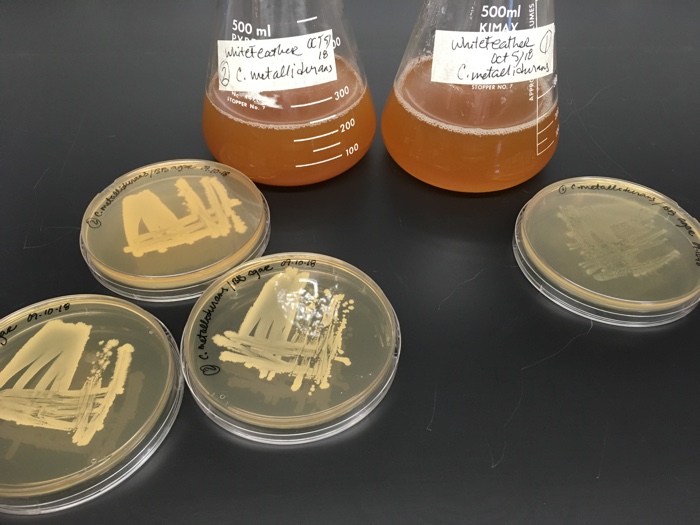
WhiteFeather Hunter, PROSPECTIVE FUTURES: THE AURELIA PROJECT, 2018
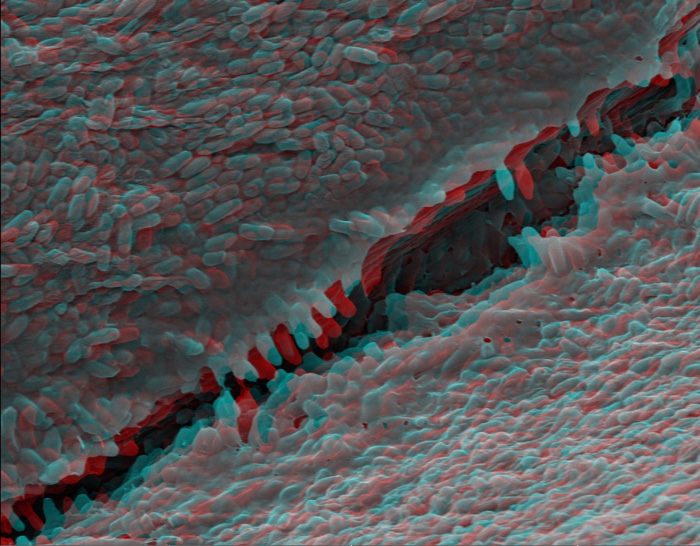
WhiteFeather Hunter, PROSPECTIVE FUTURES: THE AURELIA PROJECT (Cupriavidus metallidurans), 2018
I’m very curious about PROSPECTIVE FUTURES: THE AURELIA PROJECT. Every single aspect of it is compelling. Your intention was to make a ritual offering of gold-producing microbes to a poisoned site where the settler industry has rendered a Nova Scotia landscape useless and dangerous. What is the background of the location? How did this site become polluted and how did it affect the First Nations who lived there?
I consulted with an indigenous curator on this project, Roger Lewis, facilitated by IOTA Institute. All of the knowledge of place, in terms of its impacts on the local First Nations, is owed to him and what he shared with me in person, both onsite at the tailings site and in his office at the Nova Scotia Museum. Roger explained to me that there is no separation between the Mi’kmaq people and the landscape that houses them, now or ever throughout history. ‘Place’ is not simply a physical location but a psychospiritual and multi-temporal co-evolution of all beings. In this understanding, all damages and harm done to the landscape are done to the people that belong to that landscape, on multiple levels. The site I worked with, the Montague legacy gold mine tailings site, is a place next to people’s homes, waterways and inhabited natural landscape. It is heavily polluted with the chemicals and byproducts of ‘legacy’ gold mining, meaning the more polluting and toxic practices that were used in the late 19th and early 20th centuries. It still contains high levels of mercury and arsenic. It continues to affect people, including those who take their dogs there for walks, not understanding the toxicity levels present because they have lived next to it for so long that it has become normalized. The Nova Scotia government is interested in remediating the site, but not necessarily with its sights set on righting past wrongs, but in order to go back in and re-mine the site since it still contains high percentages of gold particulate from the original ore.
WhiteFeather Hunter, BLÓM + BLÓÐ (flowers + blood)
Can you tell us about your PhD at the University of Western Australia? What is your investigation about and what are you hoping to achieve?
My PhD is both a science doctorate as well as a design degree, so my research outputs have to meet both scientific research criteria as well as include artistic production. The art objects I produce will serve as case studies that support both a cultural and scientific analysis of my topics, which include the use of menstrual blood as a biological material in cellular biology protocols, as well as witchcraft practices in a standard (controlled) academic laboratory context. The connection point between the two is the nature of taboo in relation to (women’s) body materials and the technological manipulation of them. My main laboratory work is specifically towards producing a spoof prototype of ‘unclean’ meat, or lab grown meat produced with menstrual serum, in order to provide critique of the continuously hyped-up “clean meat” industry, among other things. One of my supervisors is one of the originators of lab-grown ‘meat’, Ionat Zurr (with her collaborator, Oron Catts) and has a long history of addressing the need for critical discussion of the impacts, potential and violence in tissue culture practices. The tissue I produce, that is grown in menstrual serum, is real (“semi-living”) tissue and the protocols for doing so are scientifically sound. But, I present it only as an instigation, not an actual product. I’m not interested in instrumentalizing women’s bodies any more than they already are by the current developments in biotechnology.
Any other upcoming projects and field of research you might be working on now?
As always, I’m advocating for the democratization of sci-tech praxes, and am working towards ways of doing more of my work at home, in my own kitchen and bathroom, as complementary spaces to the laboratory. I’m currently waiting on approval to work in a lab in Montreal with François-Joseph Lapointe to sequence the microbial and mycobial genomic material present in my own menstrual fluid. Because of the COVID situation, Montreal remains in a red zone and I’m unable to get into the lab, but I’ve had fun in the meantime, carefully collecting dozens of vaginal swabs for the full duration of my menstrual cycle, at home. I’ve treated my bathroom/ toilet as my laboratory, with my kitchen as the auxiliary storage space for all of my samples. My vaginal swabs sit in tubes next to my carrots and avocados in the vegetable drawer. Cleaning my toilet has never been so interesting, and I’m totally into this transformation of the banal into something officious for academic research.
Thanks WhiteFeather!
Keep up with WhiteFeather Hunter’s exhibitions and conferences on her news website. Next on her agenda are (among other events) a presentation of the Mooncalf project at Taboo – Transgression – Transcendence in Art & Science conference, an exhibition of the Mooncalf project as part of the upcoming Culture of Contamination show at the New York Hall of Science and an artist residency at the Museum of Witchcraft and Magic in Boscastle (Cornwall), UK.
